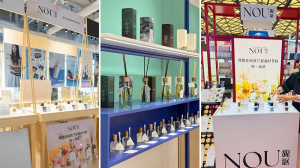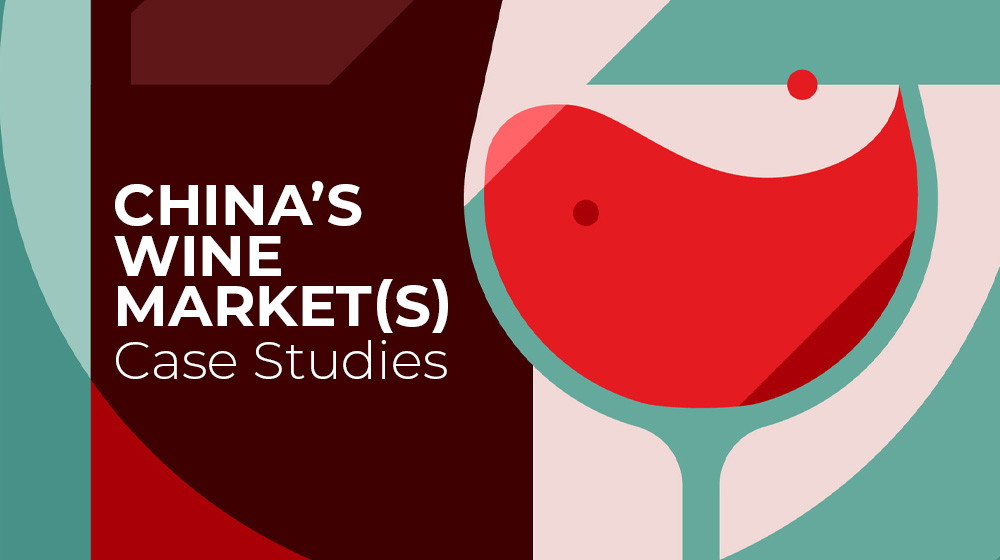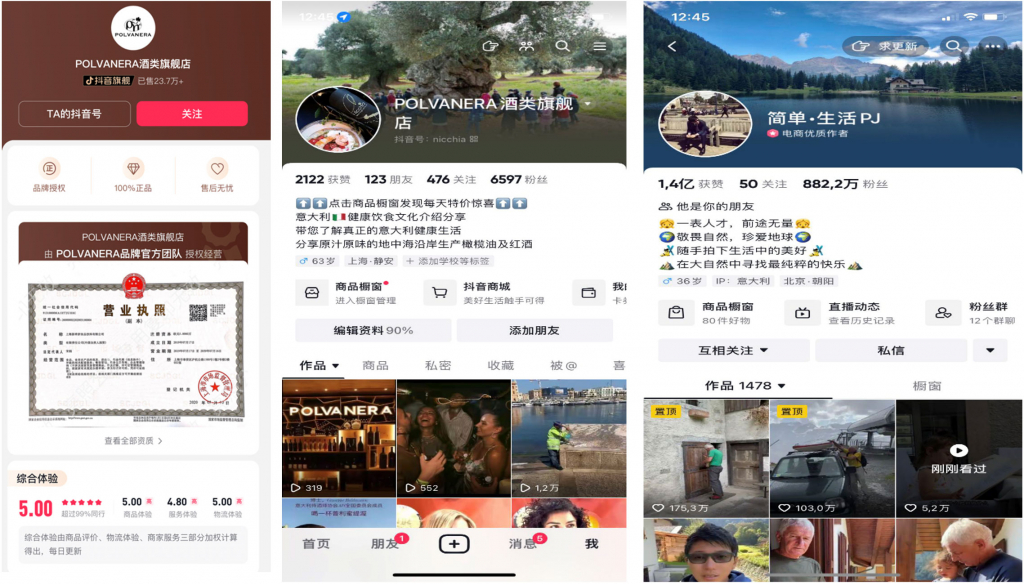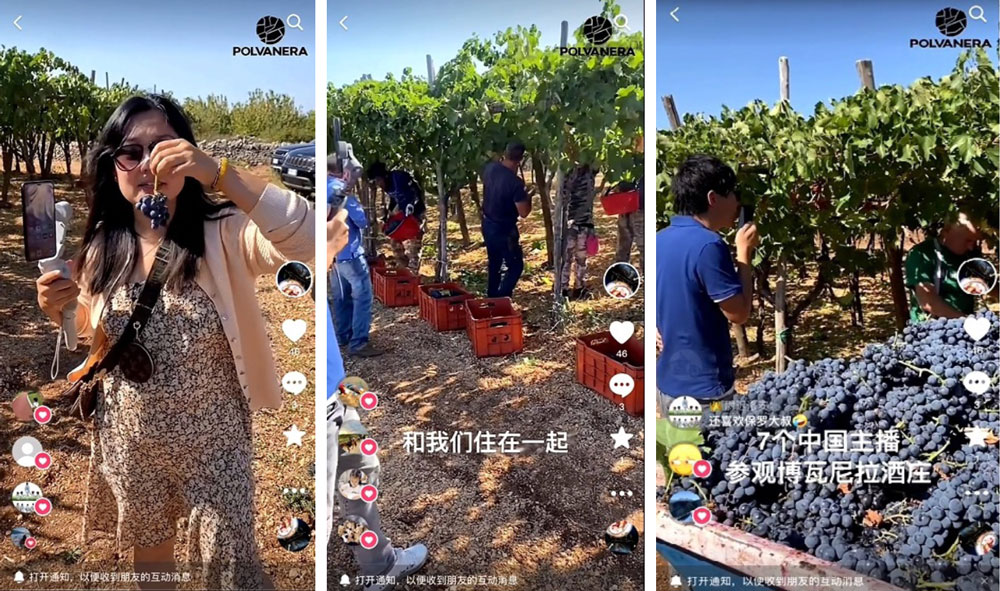



Francesco D’Aprile is an experienced entrepreneur and business consultant with more than two decades of experience in doing business with China. Francesco is a partner at P&D Consulting, a boutique consulting firm that offers customised business and management consulting solutions, primarily to Italian entrepreneurs and SMEs looking to internationalise in the Chinese market. Most of the clients represented come from the agri-food sector, especially wine, but also olive oil and traditional foods from the Italian southern region of Puglia.
Francesco D’Aprile established a Wholly Foreign-Owned Company in China in 2013 to introduce products from Italian clients into the Chinese market, particularly the reds and whites from winery Cantine Polvanera in the Bari region.
His approach differed from that of most other competitors of imported wine in China. Instead of opting for the traditional model of working with Chinese importers and distributors, Mr. D’Aprile decided to set up a Wholly Foreign-Owned Enterprise in China in 2013 and to sell directly to the Chinese market. This allowed the firm to develop and expand its own sales networks while having full control over the sales process, logistics, and quality. Of course, this also required strong support from the Polvanera winery that it represented: the winery’s owners frequently travelled to China to meet with key clients and partners.
Within a few years of activity, the company had achieved stable growth, although the overall volumes were still relatively low (around 1 ½ containers per year). Challenges started to emerge, notably with growing requests from Chinese clients, especially within the Ho.Re.Ca. channel, for a wider variety of wines, from different countries and regions, when they started to ask to their suppliers to provide for the whole wine list. This demand could not be met by Mr. D’Aprile as his company, while offering various wine types and grape varieties, only represented one winery. Most importantly, during these years, Mr. D’Aprile observed the consumption habits of Chinese consumers. He noticed that people favoured frequent outdoor dining with groups of friends, regardless of social status (from high-end clubs to popular restaurants in the hutong, the traditional alleyways of Beijing). They rarely hosted social gatherings at home, as is common in many parts of Italy. This also explained the relevance of the Ho.Re.Ca channel for imported wine in China.
The situation changed drastically with the outbreak of the COVID-19 pandemic in China. Strict pandemic prevention measures resulted in strong limitations on social gatherings, leading people to consume more at home. This shift was also aided by the world-class level of Chinese e-commerce and the emergence of new trends in live and social e-commerce. Unlike most other observers, Mr. D’Aprile firmly believed that these changes would have a profound, long-term impact on Chinese consumption habits rather than fade away as soon as the pandemic ended. This spurred Mr. D’Aprile to revolutionise his company’s business model in China, moving away from the traditional Ho.Re.Ca channel to focus on e-commerce, specifically Douyin (the Chinese version of TikTok) and Xiaohongshu (Little Red Book, aka RED). Interestingly, he did not consider other popular e-commerce platforms such as Tmall and JD.com.
In the first months of 2020, Mr. D’Aprile and his team collaborated with external professional partners to open a store on Douyin for the Cantine Polvanera winery, a process that took roughly three months. Meanwhile, Mr. D’Aprile selected a Chinese influencer based in the Dolomites region in northern Italy who was very knowledgeable about wine and gaining significant popularity on the platform with video content created to share his daily life there. A crucial aspect of his choice was the influencer’s admiration for the local lifestyle, especially that of his father-in-law.

Mr. D’Aprile established a long-term partnership with this influencer to sell the wines of his clients in ad hoc live sessions, often streamed from the winery’s cellar or during grape harvest season. One of the key strengths of Douyin is its ability to leverage impulse purchases by Chinese buyers who are watching the live streaming session. They can make purchases simply by clicking on a link displayed on the platform. This has resulted in significant quantities of wine being sold in a very short amount of time.
Over the course of three years, the Polvanera store on Douyin has managed more than 235,000 orders; it is now ranked within the top 1% of stores on Douyin. It has also received impressive 5-star ratings for quality, customer service, and logistics. On average, Mr. D’Aprile ships one full container of wine to China per month.
According to Mr. D’Aprile, most Italian wineries selling in China seem to adopt an excessively defensive approach. They primarily focus on investing in promoting the technical aspects of their products and safeguarding them against the challenges of the Chinese market, including counterfeiting. This isn’t necessarily a negative strategy. However, it appears that attention to the Chinese wine consumer, specifically their main characteristics and unique needs, is akin to pursuing a Ph.D. degree when your primary audience has a secondary education. The majority of Chinese consumers may lack the ability to fully appreciate the finer nuances of an imported wine.
In this context, a Chinese influencer with technical knowledge of wine becomes immensely valuable. The influencer can elucidate what the Chinese market demands and effectively communicate the quality and features of an imported wine to Chinese consumers, conveying the “mood” of a wine in an easily understandable manner. According to Mr. D’Aprile, having such an intermediary is fundamental.

Of course, working with Chinese KOLs is extremely challenging, especially for newcomers without extensive knowledge of the Chinese market. This is perhaps an area where national institutions and representatives can provide assistance (more details at the end of the case study). However, if executed well, it can be extremely rewarding, with a long-term and mutually beneficial mindset. It should not be a one-off approach aimed at selling a single batch of products; instead, it should be a medium to long-term strategy that benefits both parties.
Chinese KOLs generally seek two main benefits. The first is economic gain, which can be quite substantial (more details below). The second, according to Mr. D’Aprile, is even more critical than the first: reputation. For a KOL, reputation is the bedrock of their business. Their role is to establish a trust-based relationship with their followers by providing knowledge and opportunities rather than fabricated information. For example, when a KOL describes the characteristics or lifestyle in a particular area, such as the Dolomites, it piques curiosity among their followers. These followers will conduct further research, most likely through other channels on the same platform or other social media, to confirm the KOL’s authenticity. If the information checks out, trust in the KOL grows; if not, they may stop listening to the KOL. If, at a later stage, the same KOL discusses wine while describing the Italian lifestyle, their followers will trust that the information shared by the KOL is genuine. Therefore, without this trust-based relationship, KOLs would not exist.
Foreign wine sellers interested in working with Chinese KOLs should firmly keep this in mind: just as KOLs help increase sales, they should also assist KOLs in further enhancing their reputation. This will also positively impact the fees required to engage them.
At the same time, foreign wineries tend to underestimate what is actually required to work with KOLs. If your aim is to sell one or two thousand bottles of a single type of wine, you need to have the necessary inventory available already in China (for instance, ten thousand bottles available). This requires exceptional logistics, financial and organisational skills – as well as full support from the wine producers. This is also why Cross-Border E-Commerce is not a suitable option for wine, in Mr D’Aprile’s opinion: it can be used to sell a few bottles for tasting purpose, but it does not guarantee the volumes and most importantly the speed of the logistics that Chinese consumers seek.
The fee structure for Chinese KOLs is as follows:
Commission on sales: This can vary significantly depending on the popularity and follower base of the KOL, generally ranging from 10% to even 30% of the revenue.
Fixed fee: This also varies, but it could be as high as 2k or 3k EUR per single session, without guaranteeing any performance target. Typically, if the fixed fee is low, the commission fee is higher, and vice versa. Alternatively, it is also possible to negotiate more stable options, such as monthly agreements, during which the KOL commits to regularly promote the winery in their activities. In this case, the investment is certainly more significant (e.g., 30k to 40k EUR per month), but it encourages the KOL to perform well, often leading them to be proactive and propose new approaches to increase sales.
Wineries looking to collaborate with Chinese KOLs should bear in mind that their bargaining power depends on the notoriety of the brand (with the exception, of course, of large-scale, world-class brands). KOLs will have little interest in working with unknown foreign wineries; hence, in such cases, their negotiating power will be low. However, if a foreign winery is already well-known in China, perhaps due to strong sales records and positive ratings on popular e-commerce platforms, then the winery’s negotiating power vis-à-vis the KOL will be higher, potentially resulting in lower fees. Ultimately, KOLs benefit from working with renowned brands.
Mr. D’Aprile is fully aware that, in practice, this poses a barrier for new foreign wineries trying to enter the Chinese market. Therefore, during the initial stage, a higher investment is required to build the brand in China; it’s only in a later stage that profits can be maximised.
For many professionals engaged in business in China, the potential of the country’s e-commerce, especially live e-commerce, is nothing new. Even those without direct experience but with an interest in the Chinese market are aware of the opportunities offered by working with Chinese KOLs. However, a significant obstacle often faced is how to find the right KOL—how to identify the right one, and subsequently, how to engage with them. An approach often chosen is to work with third-party marketing agencies that handle everything for a fee. According to Mr. D’Aprile’s experience, after working with four such agencies, this approach might work well for certain product categories or larger wineries, but not as effectively for wine, especially for small to medium-sized wineries. The fees requested by these agencies are usually very high, your negotiating power is limited, and often their focus is on quantity rather than quality. Additionally, the KOLs they work with may not possess a solid technical knowledge of wine.
Of course, in the beginning and without a well-established network in the market, there might not be many alternative options. However, if possible, wineries should attempt to identify potential KOLs on their own or with the help of close partners and work from that list. The criteria for selection should not be limited solely to the number of followers that a KOL has or the volume of sales achieved in a single session. Other criteria, such as knowledge about the country and lifestyle, specialisation in wine, knowledge of grape varieties and regions, and higher user engagement, should also be taken into account. Nevertheless, it may be challenging to effectively bring these KOLs on board. Even Polvanera, despite its impressive ratings on Douyin, still expends a considerable amount of effort to engage with new KOLs they are interested in cooperating with. At some point, KOLs may even approach you on their own.
Foreign wineries, especially small ones entering the Chinese market for the first time, might encounter challenges when trying to establish themselves or remain competitive over the long term. There are several barriers that make working with KOLs even more difficult and costly than it already is. These issues can potentially be mitigated, at least in part, by the representations of specific countries,
regions, or product consortia in China. Rather than primarily focusing on traditional events such as trade fairs, exhibitions, and store promotions, national representations could take the initiative to establish a network of Chinese KOLs who specialise in the foreign country/regions and in the wine sector, possibly even covering the fixed fees that KOLs require for each individual livestreaming session. This approach would reduce costs and facilitate the participation of more wine producers. While it’s true that some representations have organised livestreaming sessions on occasion, such as for Tmall’s Singles Day or the 618 Shopping Festival, these efforts have typically been isolated campaigns centred around a single event. A more structural, long-term approach would likely be more beneficial. KOLs may also be more willing to participate, as they effectively become ambassadors for their respective countries, enhancing their own reputation in the process.
Regardless of the channel, whether it’s KOLs or the traditional Ho.Re.Ca sector, there are several challenges that foreign wineries need to confront in China. First and foremost, they need to compete with products from all over the world, often from countries that enjoy preferential trade agreements with China, resulting in significantly lower prices. Providing a service that meets the expectations of Chinese consumers requires excellent logistics, financial, and organisational skills, as well as a strong commitment of resources. Additionally, there are technical requirements that products must comply with.
However, according to Mr. D’Aprile, these challenges can be overcome simply by working with the right professionals. Despite having its own legal entity in China, which allows for hiring people on the ground, Mr. D’Aprile chose to collaborate with external providers, each specialising in a specific aspect of the value chain: one logistics company that houses the wine in its warehouse and handles domestic logistics (strictly Shunfeng), one professional brokerage firm responsible for customs clearance, one professional firm handling customer service, one professional firm managing the Douyin store, and so on. There is only one full-time resource on the ground in China to oversee all these processes. Costs are inevitably higher, reflecting on pricing. However, this approach guarantees the quality of service and helps avoid unpleasant surprises. For instance, the GACC/CIFER registration required since January 2022 did not pose an issue for Mr. D’Aprile; the process was efficiently handled within a short period before the deadline.
Last, Mr. D’Aprile expresses little concern about the short-term future outlook of the Chinese wine market. On one hand, the pandemic and the overall political context have caused foreign wineries and exporters to explore other markets. On the other hand, China’s current economic situation is negatively affecting consumption levels. Consumers and importers are more cautious and less willing to take risks, marking an unprecedented situation for China. On the other side, it is exactly in this time of challenges that, such big market as China is, international key players need to consider, approach and manage professionally.
Find more information and practical advice to export wine from Europe to China in our recently published report China’s Wine Market(s): Drivers, Technical Requirements, and Opportunities for EU Producers.